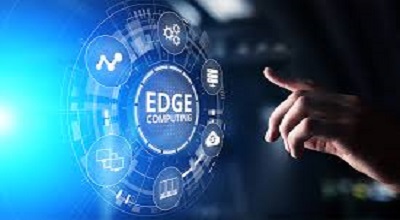Edge Computing Integration
Businesses are always looking for methods to improve real-time data processing, lower latency, and increase efficiency in the fast-paced digital world of today. Integration of edge computing is one of the most revolutionary technologies that is facilitating these developments. Edge computing reduces latency, improves security, and maximizes bandwidth utilization by moving processing and data storage closer to the location of data creation.
At ZoomDoors, we recognize how critical it is to maintain our technological leadership. We’ll examine the most recent developments, advantages, difficulties, and potential applications of edge computing integration in this extensive blog article.
Edge computing: what is it?
Instead of depending on a centralized cloud server, edge computing is a distributed computing paradigm that processes data close to the point of data origination. In data-intensive applications like IoT, AI, and real-time analytics, this method lowers latency, speeds up response times, and increases efficiency.
Important Features of Edge Computing:
- Minimal Latency: quicker data processing because to the data sources’ close proximity.
- Optimizing bandwidth lessens the requirement for bulk cloud data transfers.
- Improved Security: Processing data locally reduces vulnerability to online attacks.
- Scalability: Facilitates the expansion of smart device and IoT ecosystems.
The Operation of Edge Computing Integration
Deploying computing resources (servers, gateways, or tiny data centers) at the “edge” of the network, near IoT devices, sensors, or end users, is known as edge computing integration.
- Steps in Integrating Edge Computing: Data Collection: Real-time data is gathered by sensors and IoT devices.
- Local Processing: Rather than transmitting data to a central cloud, edge nodes process it locally.
- Actionable Insights: Processed data is used to make decisions instantly.
- Selective Cloud Sync: Only important information is transferred to the cloud for analysis or long-term storage.
Current Developments in the Integration of Edge Computing
The field of edge computing is changing quickly. The following are the most recent trends:
A. The Edge of AI and Machine Learning
For real-time decision-making, AI models are being directly installed on edge devices (such as smart cameras and driverless cars).
B. Edge Synergy and 5G
5G networks’ ultra-low latency and fast connectivity improve edge computing.
C. EaaS, or Edge-as-a-Service
For smooth integration, cloud providers like as AWS, Microsoft Azure, and Google Cloud provide edge computing services.
D. Strengthened Security Measures
In order to prevent breaches, edge networks are integrating blockchain technology and zero-trust security.
E. Healthcare Edge Computing
Medical gadgets with edge capabilities are enhancing real-time patient monitoring and diagnosis.
Edge Computing’s Advantages for Companies
- Faster Decision-Making: Real-time analytics are made possible by lower latency.
- Cost-effectiveness: Reduces bandwidth and storage expenses in the cloud.
- Enhanced Reliability: Operates even when internet access is sporadic.
- Improved Privacy Compliance: To comply with laws like the GDPR, sensitive data can be processed locally.
Difficulties in Implementing Edge Computing
Edge computing has drawbacks despite its benefits:
- Security Risks: Attacks may target dispersed nodes.
- Complexity of Management: Needs strong orchestration tools.
- Expensive Initial Costs: Installing edge infrastructure can be costly.
Edge Computing vs. Cloud Computing
| Feature | Edge Computing | Cloud Computing |
|---|---|---|
| Latency | Low (milliseconds) | High (depends on network) |
| Data Processing | Localized | Centralized |
| Bandwidth Usage | Minimal | High |
| Use Case | Real-time applications | Large-scale data storage |
- Manufacturing: Predictive maintenance using Internet of Things sensors is the seventh industry that is utilizing edge computing.
- Edge artificial intelligence enables personalized customer experiences in retail.
Patient monitoring using remote access in healthcare?
Traffic management and surveillance are two aspects of smart cities.
The Prospects for the Integration of Edge Computing
Gartner predicts that by the year 2025, more than 75 percent of enterprise data will be processed at the edge. Quantum edge computing and self-healing networks are two examples of examples of innovations that will further revolutionize the space.
The Role That ZoomDoors Can Play in Providing Solutions for Edge Computing
Here at ZoomDoors, we offer cutting-edge computing solutions that are specifically designed to meet the requirements of your company. Included in our services are:
Specific Deployment of the Edge
- Management of Security and Compliance Operations
- Integration with Cloud Systems That Are Already Existing
Questions that are Requested Frequently (FAQs)
First, what is the most significant benefit of using edge computing?
A: Decreased latency and data processing that is more rapid.
To what extent does edge computing take the place of cloud computing?
In a hybrid approach, they do not compete with one another; rather, they complement one another.
How does edge computing complement the Internet of Things?
By enabling data processing in real time at the device level, the answer is affirmative.
Conclusion
Edge computing integration is revolutionizing industries by enabling faster, more efficient, and secure data processing. As businesses continue to adopt IoT, AI, and 5G, edge computing will play a pivotal role in shaping the future of technology.

